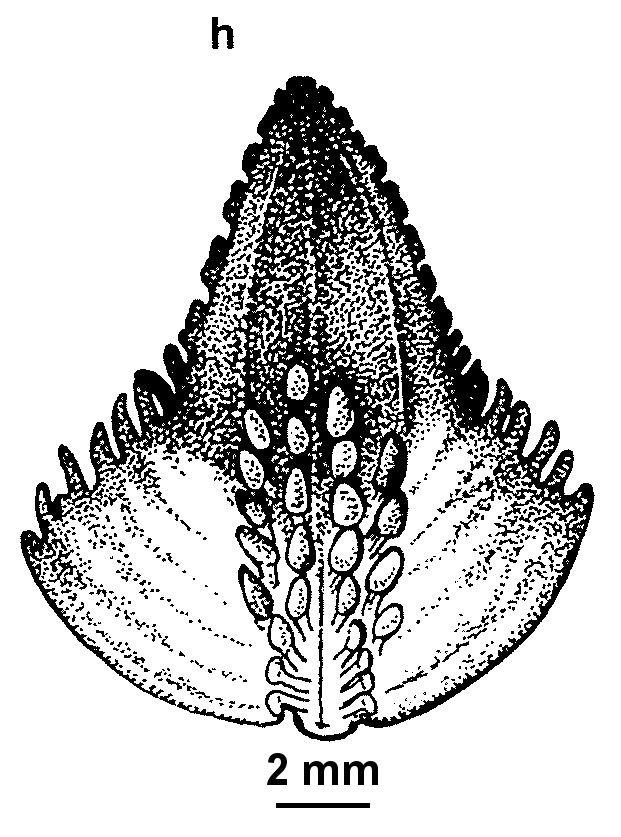Caladenia calcicola
G.W.Carr Limestone Spider-orchidFlowering plant 11–22 (rarely to 28) cm tall. Leaf 5–13 cm long, 4–15 mm wide. Flowers solitary (rarely 2); perianth segments 1.5–4 cm long, pale yellow with red median stripe; lateral sepals divergent, deflexed, flattened at base, 2–4 mm wide, tapered to a filiform, clubbed tail, club linear, 2–9 mm long, with yellowish to reddish-purple, contiguous, sessile glands; petals spreading to deflexed, shorter than sepals, flattened at base, tapered to a long acuminate apex. Labellum curved forward with apex recurved and lateral lobes erect, lamina ovate to obtrullate, more or less 3-lobed, 8–15 mm long and 7–11 mm wide (when flattened), glossy and waxen, red at least distally, proximal half paler red or yellowish-cream, with red veins; marginal calli on lateral lobes irregularly triangular to linear, to 1 mm long, diminishing in size towards the (usually) entire or slightly irregular mid-lobe; lamina calli in 4 (rarely 6) rows, more or less crowded, not reaching bend, stout and flat-topped, to 2.5 mm long at base of lamina, decreasing in size towards apex. Flowers Sep.–Oct.
GleP, VVP. Also SA. Restricted to a few localities west of Portland and just extending into S.A., growing on low ridges overlying limestone.
Differs from other members of the C. reticulata complex in having a glossy, waxen labellum with more or less congested, stout, flat-topped lamina calli and shorter (not more than 1 mm long) marginal calli.
Entwisle, T.J. (1994). Orchidaceae. In: Walsh, N.G.; Entwisle, T.J., Flora of Victoria Vol. 2, Ferns and Allied Plants, Conifers and Monocotyledons, pp. 740–901. Inkata Press, Melbourne.
 Spinning
Spinning

